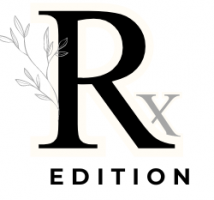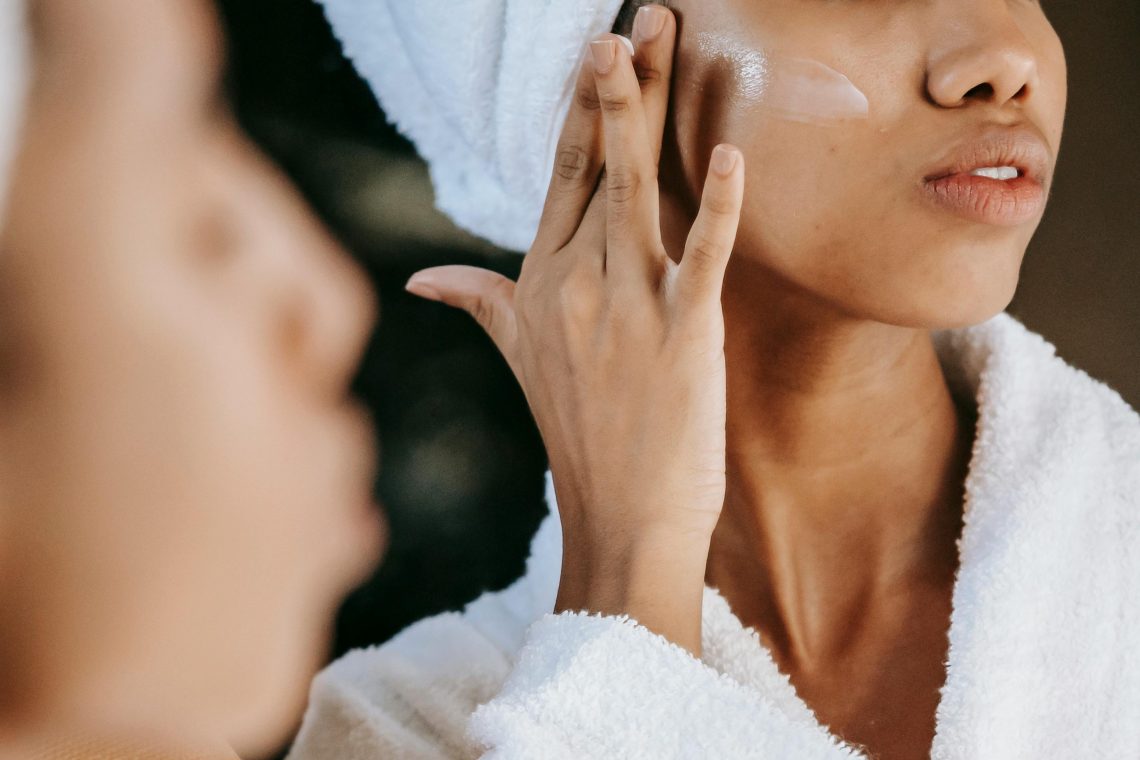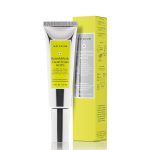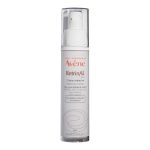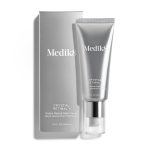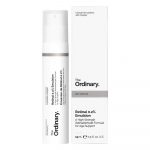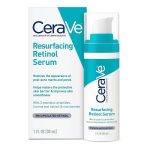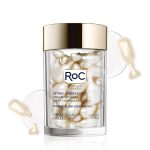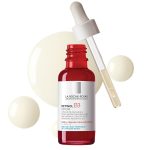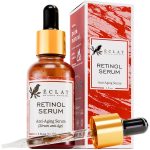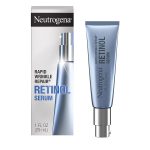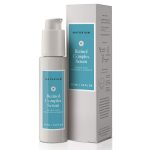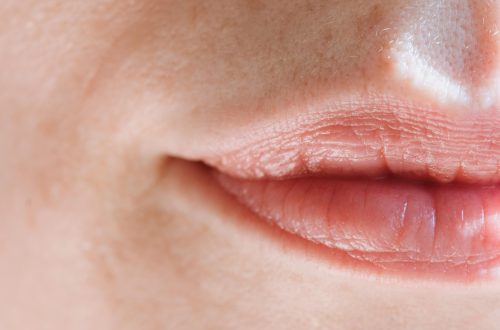Table of Contents
- Introduction
- What’s the Difference Between Retinol and Retinal?
- Is Retinal Really More Effective than Retinol?
- Clinical Data for Retinol
- Clinical Data for Retinal/Retinaldehyde
- Quick Comparison Table: Retinol vs. Retinal
- Considerations When Using Retinoids
- Best Retinal Products
- Best Retinol Products
Introduction
As I get older, I find myself on a quest for that magical ingredient that can slow down the aging process. If you’re in the same boat, you know how overwhelming the world of skincare can be. There are so many products out there claiming to stop or reverse time, and it can be daunting. Plus, it takes time, money, and a lot of trial and error to see what really works for your skin.
So, how do you sift through all the information and figure out where to start? I’ve spent countless hours reading scientific articles and clinical trials, and while I haven’t uncovered everything, a few ingredients consistently stand out with solid data backing them up. One of these is retinoic acid. I was thrilled to find so much evidence supporting its effectiveness in anti-aging, anti-acne, and other skin conditions. Let’s dive into what makes this ingredient so remarkable!
What's the Difference Between Retinol and Retinal?
Did you know that non-presciption retinoids products have been available in skincare products since 1984? There are so many forms of retinoids! And like many active chemicals, those that are more potent often come with side effects or tolerability issues. The retinoic acids (aka your prescription tretinoin’s, etc.) tend to be the strongest. And then there are the non-prescription retinoids – ingredients that commonly come in your skincare products such as retinOL and retinAL, which have historically been touted for being milder and better tolerated. But does milder mean less effective? And if so, is it worth spending your money or time? In this post, I’m going to focus on retinol & retinal.
What are Retinoids?
Let’s start with the basics – what are retinoids?! Retinol and its derivatives are all forms of Vitamin A. Vitamin A can be categorized into two types: pre-formed vitamin A (retinoids) and provitamin A (carotenoids).
Here is a breakdown of the difference:
- Pre-formed Vitamin A (Retinoids)
These are active forms of vitamin A that are found in animal products. They include:
- Retinol: The alcohol form of vitamin A, which is involved in skin health and immune function. It’s often used in skincare products.
- Retinal (Retinaldehyde): The aldehyde form, essential for vision. It is also used in skincare but is less common than retinol. It is more potent than retinol but less irritating than retinoic acid. It is used for its ability to improve skin texture, reduce fine lines, and treat acne.
- Retinoic Acid: The acid form, crucial for cellular growth, differentiation, and embryonic development. It is used in prescription acne medications and anti-aging treatments (think tretinonin, isotretinoin, etc.)
- Retinyl Esters: Storage forms of vitamin A, (e.g., retinyl acetate) which are converted to retinol in the body. These are found in animal liver and fortified foods.
- Provitamin A (Carotenoids)



These are precursors to vitamin A found in plant products. The body converts them into retinoids. Key carotenoids include:
- Beta-Carotene: The most efficient provitamin A carotenoid. It is found in colorful fruits and vegetables like carrots, sweet potatoes, and spinach.
- Alpha-Carotene: Less efficient than beta-carotene but still a significant source. Found in orange and yellow vegetables.
- Beta-Cryptoxanthin: Another provitamin A carotenoid found in foods such as papaya, sweet red peppers, and oranges.
So in summary, while both retinol and retinal are derivatives of Vitamin A and are both used in skincare, they have different roles in the body and their potency varies. You can think of it like this:
Potency: Retinoic acid > Retinal > Retinol
Tolerability: Retinol > Retinal > Retinoic acid
Is Retinal Really More Effective than Retinol?
First, let me level set and manage your expectations. After hours of research, I’m disappointed (but not surprised) to share that there are very few robust head to head comparison trials evaluating the efficacy of retinol vs. retinal. What I’ve compiled below are really individual efficacy trials for each of these ingredients. That being said, the good news is that there are tons of great evidence showing that both ingredients are effective in what they do.
Clinical Data for Retinol
1. A randomized, double-blind study (the gold standard of clinical trials) compared topical retinol, retinoic acid, and a vehicle alone (think placebo). In their study, a small sample of healthy volunteers applied to their buttock skin. Retinol was shown to cause comparable increase skin thickness (more active collagen production) vs. retinoic acid while retinoic acid caused significantly more redness and irritation in comparison to retinol.
2. In 2006, a group of Belgian and French investigators evaluated and compared the effects of retinol (ROL), 1% melibiose + lactose (ME-L) – sugars that help skin retain moisture, and their combination (ROL-ME-L) on the firmness and smoothness of facial skin in 120 women over 12 weeks, with a 4-week post-treatment phase. A salicylic acid (SA) emulsion served as a reference. Results showed that ROL and ME-L were more effective than SA in improving skin strength properties and contours, with ROL-ME-L combination showing even better results. Each product had slightly different effects on skin properties, but overall, ROL, ME-L, and ROL-ME-L formulations improved skin physical properties impaired by aging, surpassing the effects of the SA formulation.
3. Another group of investigators conducted a small randomized, double-blind study evaluating the effectiveness of topical retinol in improving the signs of aged skin with 36 elderly participants (average age 87). Retinol lotion was applied to one arm and a placebo to the other up to three times a week for 24 weeks. Results showed that retinol significantly reduced fine wrinkles compared to the placebo. Retinol also increased levels of skin components that help retain water and promote collagen production.
4. In another study among elderly adults, 53 individuals aged 80 years and older, the use of topical application of 1% vitamin A (retinol) for seven days increased collagen synthesis, suggesting that that vitamin A treatment may help repair skin damage in naturally aged skin, similar to its effects in photo-aged skin.
Clinical Data for Retinal/Retinaldehyde
1. This study was more focused on exploring the tolerability (and efficacy) of retinaldehyde. It found that retinaldehyde significantly increased certain proteins and cellular markers in the skin, indicating biological activity, with its effects ranking just below retinoic acid. In a trial with 229 participants, different concentrations of retinaldehyde were tested. The 1% concentration was tolerated by 70% of users, while lower concentrations (0.5%, 0.1%, and 0.05%) were even better tolerated. The 0.1% and 0.05% concentrations were suitable for long-term use, especially in patients with inflammatory skin conditions. These results show that retinaldehyde is effective and well tolerated for improving skin health.
2. In 1998, these scientists compared the effectiveness and tolerability of a 0.05% retinaldehyde cream with a 0.05% retinoic acid cream and a placebo in treating facial photodamage. Researchers analyzed wrinkles and skin roughness in 125 patients over 44 weeks. Both retinaldehyde and retinoic acid significantly reduced wrinkles and roughness by week 18, with a less pronounced effect by week 44. The placebo showed no significant changes. Retinaldehyde was well tolerated throughout the study, while retinoic acid caused more irritation and reduced patient compliance. Overall, retinaldehyde proved effective and better tolerated for photodamaged skin.
3. A year later in 1999, this study looked at the effects of 0.05% retinaldehyde cream on aging skin over the course of one year using high-resolution ultrasound and an echorheometer to measure skin thickness, stiffness, and elasticity. Twenty-one patients applied the retinaldehyde cream on their faces, while a control group of 19 volunteers used only an emollient (placebo). Measurements were taken at the forehead and temple before and after treatment. The results showed that retinaldehyde significantly increased epidermal thickness at the temple and improved skin elasticity compared to the placebo group. Overall, the study suggests that retinaldehyde has beneficial effects on the physical properties of aging skin.
4. A more recent 2018 study evaluated 40 female Korean patients who applied either 0.1% or 0.05% retinaldehyde (RAL) creams twice daily for three months. The effects on wrinkles and skin texture were measured including water loss from the skin, skin hydration, melanin index, and skin brightness. Both RAL concentrations showed significant improvements in skin texture, reduced water loss, and increased hydration, with no significant difference between the two groups. However, only the 0.1% RAL cream significantly improved the melanin index. Both creams were well tolerated and effectively improved skin hydration and texture, with the 0.1% cream also reducing pigmentation.
5. I wanted to include one more study that looked at retinaldehyde compared to other treatment modalities, in this case glycolic acid peels. It compared the efficacy and safety of an anti-aging cream containing 0.1% retinaldehyde (RAL) with Glycylglycine Oleamide and Pre-tocopheryl against glycolic acid (GA) peels in treating photodamaged skin. Fifty-five women were randomized into two groups: one applied the anti-aging cream daily for eight weeks, and the other underwent three sequential GA peels (20%, 50%, and 70%) spaced 2-3 weeks apart. The treatments were assessed for skin texture, wrinkle length, complexion radiance, and evenness of pigmentation and texture using profilometry, image analysis, and self-assessment. Both treatments similarly reduced wrinkle depth and volume, but the cream showed superior skin texture refinement. The cream was also better tolerated, with fewer and milder adverse events compared to the peels. The study concluded that the anti-aging cream is as effective as GA peels for photoaging but with better tolerability, making it a viable alternative.
Conclusion
Retinol and retinal are both effective in improving skin health and reducing signs of aging, but they have slightly different effects and tolerability profiles. Studies comparing retinol and retinaldehyde show that retinaldehyde is generally well-tolerated and effective for improving skin texture, reducing wrinkles, and increasing skin hydration. For instance, retinaldehyde significantly increased skin thickness and elasticity, with fewer side effects compared to retinoic acid. Moreover, retinaldehyde creams were well-tolerated even at higher concentrations and showed significant improvements in skin texture and hydration. In comparison, retinol has also been shown to reduce fine wrinkles and increase collagen production, but it may cause less redness compared to retinoic acid and even retinaldehyde. Overall, both retinol and retinal are effective options for improving skin health and reducing signs of aging, with retinaldehyde being particularly well-tolerated and perhaps more potent for aging skin.
Comparison table for quick reference:
|
Feature |
Retinol |
Retinal (Retinaldehyde) |
|
Availability |
Widely available in over-the-counter products |
Less common, fewer products available in the U.S |
|
Effectiveness |
Effective for anti-aging and acne |
More potent and faster results than retinol |
|
Conversion Process |
Converts to retinaldehyde, then retinoic acid |
Converts directly to retinoic acid |
|
Speed of Results |
Gradual, consistent improvements |
Faster results due to fewer conversion steps |
|
Irritation Potential |
Mild irritation, redness, peeling |
Less irritation than retinoic acid, but more than retinol |
|
Best For |
Beginners, sensitive skin, gradual improvements |
Experienced users, more pronounced aging or acne |
|
Price |
Generally more affordable |
Can be more expensive |
|
Skin Concerns Addressed |
Fine lines, mild acne, general texture improvement |
Moderate to severe aging signs, persistent acne |
|
Usage Recommendation |
Start with lower concentration, increase gradually |
Also start with lower concentration, increase gradually |
|
Consultation |
Suitable for most people, especially beginners |
If you’ve used retinols previously, it is likely you’ll be able to use this. However, for any questions or concerns, always consult a dermatologist before use |
Considerations When Using Retinoids
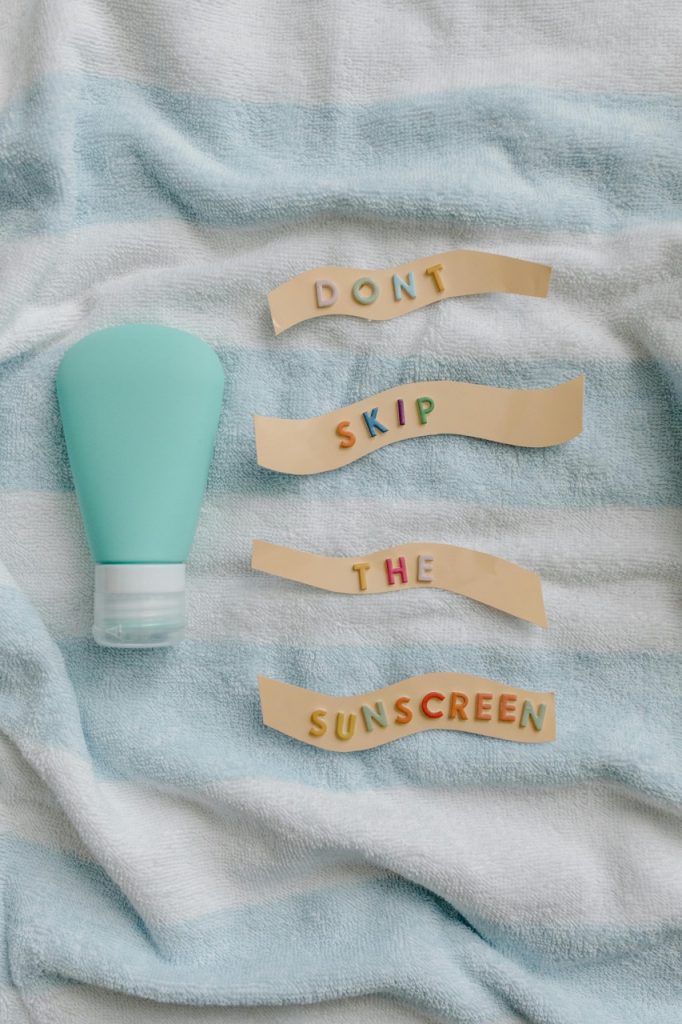
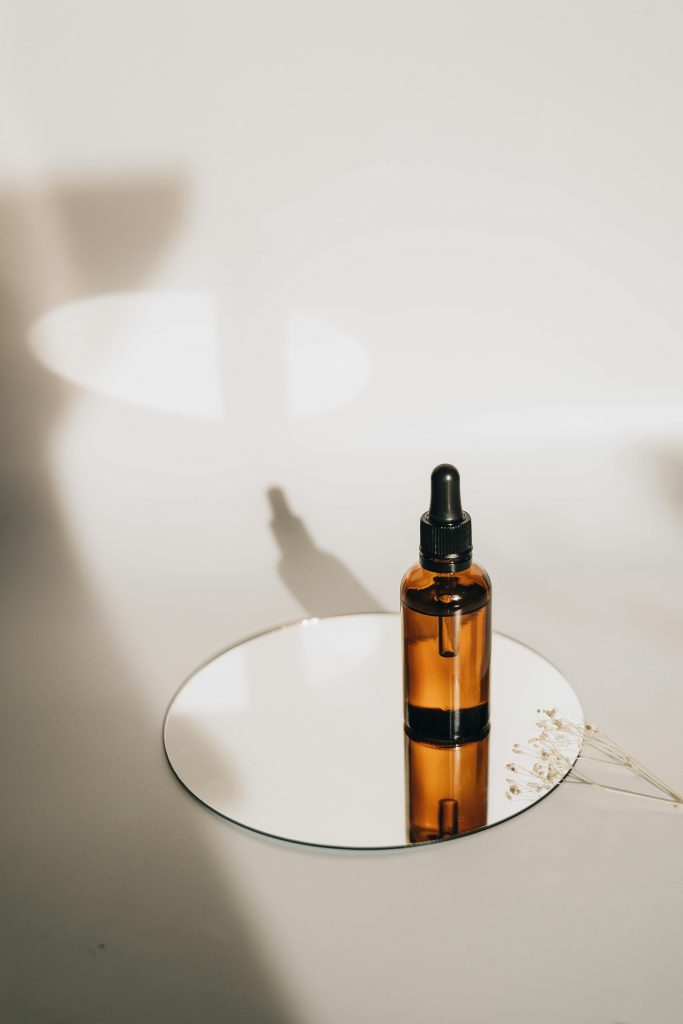

When using retinoids like retinol or retinal, it’s important to know how to use them effectively for the best results and value. Here are some key considerations.
- Best time to use/sun protection – Retinoids can make your skin more sensitive to the sun, increasing the risk of sunburn. For beginners, consider using at night time. If you apply during the day, always use sunscreen and limit sun exposure.
- Skin sensitivity – Retinoids can cause irritation, dryness, and redness, especially when you first start using them. Begin with a lower concentration, a few days a week, and gradually increase it as your skin builds tolerance. To help with dryness and irritation, use a good moisturizer – you can even sandwich this in before and after the retinoid application. This can help maintain your skin barrier and reduce the risk of flaking and redness.
- Best co-ingredients – Be cautious when combining retinoids with other active ingredients, such as AHAs, BHAs, or benzoyl peroxide, as this can increase the risk of irritation. If needed, use these products at different times of the day or on alternate day.
- Pregnancy and nursing – Many retinoids, especially prescription-strength ones, are not recommended during pregnancy or nursing due to potential risks to the fetus or infant. Consult your healthcare provider before use.
- Consistency and patience – Retinoids take time to show results, often several weeks to months. Consistent use is key to achieving the desired anti-aging or acne-fighting effects.
- Storage – Store retinoid products in a cool, dark place to prevent degradation and maintain their efficacy. Avoid exposing them to light and heat.
Best Retinol and Retinal products
Retinal Products
Retinal products are less common and tend to be more expensive than retinol products (although I’ve included 2 reasonably priced options here). The products below are available in various concentrations. If you’re new to retinoids, start with a lower concentration and gradually increase.
Retinol Products
There are far more established retinol products compared to retinal. Given that most have similar ingredients and concentration, I compiled and ranked these products based on the good ol’ combination of 1) cost and 2) number of reviews 3) review scores. So in other words, the cheapest product with the most reviews and the highest reviews will top the list.
As an Amazon affiliate, I may earn compensation from qualifying purchases.
